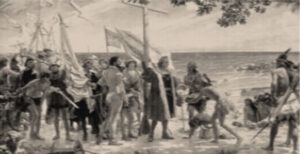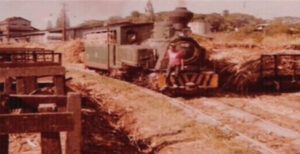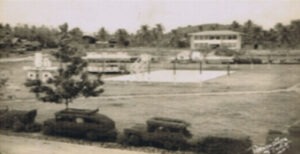Institutional Capability
Local Government Structure
Number of Municipal Officials and Employees by Office and Tenurial Status Toboso, 2019

Total workforce is Two Hundred Ninety Five (295) personnel which are distributed to the 16 offices. This number includes 69 with permanent appointments, 23 permanent casual workers, 62 contractual workers, 3 coterminous employees and 138 job order employees.
Status of Financial Health
Comparative Local Government Revenue, by Source Toboso, 2017-2019

Actual Expenditures by General Account Toboso, 2017, 2018 and 2019

Development Legislation
The Sangguniang Bayan has produced a total of 296 resolutions and 1 ordinance from 2017 to 2019. Some of these legislations, though not a significant number are relevant to planning and indicates the LGU’s earnest efforts to undertake development programs, projects and activities in the municipality. Most significant resolution is the adoption of the Comprehensive Land Use Plan 2013-2022 as well as the approval of its Zoning Ordinance of the Municipality which serves as a beacon light to guide our implementers along the intricate and complex road to progress and attainment of its vision.
LGU-CSO-Private Sector Linkages
12 LOCAL SPECIAL BODIES/COUNCILS
- Municipal Development Council
- Local Health Board
- Local School Board
- Municipal Peace and Order Council
- Municipal Disaster Risk Reduction and Management Council
- Municipal Solid Waste Management Board
- Municipal Council for the Protection of Children
- Local Finance Committee
- People Law Enforcement Board
- Municipal Nutrition Council
- Municipal Integrated Water, Sanitation and Hygiene Council
- Municipal Bids and Awards Committee
LGU-CSO-PRIVATE SECTOR LINKAGES
- There are 68 NGOs/POs and CSOs registered in Toboso
- Majority are farmers and fisherfolks
- POs are members of Pambansang Mananalon, Mag-uuma, Mag-babaul, Magsasaka ng Pilipinas (P4MP)
DEVELOPMENT THRUSTS
- Human Resource Development
|
– |
Educational Development |
|
– |
Vocational and Technical Education |
- Agricultural Development
|
– |
Integrated Agricultural Development |
|
– |
Integrated Coastal Fishery Development |
|
– |
Physical Infrastructure Support |
- INDUSTRIALIZATION
|
– |
Port Development Project |
|
– |
Light and Medium Industrial Development |
|
– |
Road Network System and other Infrastructure Support Facilities |
DEVELOPMENT GOALS AND OBJECTIVES
GOALS:
- To become self-sufficient in agricultural crops, livestock and poultry and fishery products
- To have a balanced agro-Industrial growth
- To attain socio-economic stability
- To have an adaptive and balanced environment
OBJECTIVES:
- To increase productivity and income of marginalized sectors of the
municipality through proper utilization of commercial, industrial and
agricultural resources.
- To diversify resource-based production and balance agro-industrial
expansion in the municipality will contribute to the socio-economic opportunities geared toward the improvement of the living condition of the people.
- To improve infrastructure, utilities and facilities to be climate change adaptive, disaster resilient and to compliment socio-economic growth.
- To uplift the social conditions of the residents of Toboso through the provision of sustained and quality health, sanitation education, housing, social welfare and protective services.
- To enhance program on human resources to include manpower development geared towards the labor requirements of industries and agri-business sectors.
- To advocate biodiversity and ecological awareness and protection in order to restore and preserve the natural resources from ridge to reef for the benefits of the future generations.
- To establish disaster risk reduction measures and adapt climate change proofing mechanism to cope with disaster risk.
- To strengthen development administration and management capability for better delivery of services
THE CONCEPT/STRUCTURE PLAN
Toboso being an agricultural town has existing large prime agricultural lands, a thriving fishing and aquaculture industry and has a 16-meter quayside draft port which can accommodate modern and bigger post-panama international vessels, as identified Toboso’s comparative advantages of the Province will have this concept to compose of the following:
- Urban Growth Center
- Secondary Growth Center
- Industrial Estates/Park
- New Settlement Site
- Food Basket
- Protected Area
- Development Area
- Production Area
Urban Growth Center is located in Barangay Poblacion, since most of the common features of development are concentrated in the town proper, and the possibility of the port development of an international standard port and the establishment of industrial estate where business and economic activities tend to converge. It also includes the construction of coastal road if port development will be realized to decongest traffic flow of the highway.
Industrial Estates are specific areas zoned for industrial activity by the government to the entrepreneurs to establish their industries there. Industrial estates have been utilized as an effective tool for the promotion and growth of small-scale industries and to decentralize industrial activity to rural areas. Other terms of industrial estates are industrial region, industrial park, industrial area, and industrial zone. The industrial estates will be located in Sitio Mascovado, Barangay Poblacion and Salamanca, Toboso, Negros Occidental. This municipality having the potential of a deep water port and a stable and economically viable land base has already identified possible investors and was able to prepare brief project feasibility study. The plan is to develop and operate an industrial estate near the proposed port area. The identified land area covers 526.2263 hectares for industrial development and 82.6586 for agri-industrial development as projected within 10 years by the investors.
Secondary Growth Centers are to be located in Stop Aguinaldo, Brgy. San Isidro and Brgy. Bug-ang since these barangays are getting urbanized because of the presence of public markets and “bagsakan” centers. These serve as market outlets of agricultural products of our identified food baskets.
Food Basket, being one of the food baskets of the province, Toboso will intensify its promotion, protection and sustainable management of agricultural and natural resources and will become one of the grains producing and trading centers in North Negros.
Food Baskets are to be established and developed in the following brgys:
- Barangay Bandila – Agricultural Crop Production, and Livestock and Poultry production
- Barangay Bug-ang – Agricultural Crop Production, and Livestock and Poultry production
- Barangay San Isidro – Agricultural Crop Production, and Livestock and Poultry production
- Barangay Magticol – Agricultural Crop Production, and Livestock and Poultry production
- Barangay Tabun-ac – Agricultural Crop Production, and Livestock and Poultry production.
- Barangay San Jose – Agricultural Crop Production, and Livestock and Poultry production
- Barangay Salamanca- Agricultural Crop Production, Fishery production (fresh and sea water), and livestock and poultry production
- Barangay General Luna – Agricultural Crop Production, Fishery production (fresh and sea water), and livestock and poultry production
These areas will cater the food requirements of the town as well as the neighboring towns and cities of the province. Networking and resource mobilization will be strengthened for the financial and technical assistance of the farmers/fishermen.
New Settlement Site will be located in So. Mascovado, Barangay Poblacion near the National Highway and industrial estate area. These will cater future residential needs of the town as well as being developed with adequate infrastructure and basic facilities.
Protected Area, the municipality’s protected areas include identified portions of land and water set aside by reason of their unique physical and biological significance, managed to enhance biological diversity and protected against destructive human exploitation. The following are categorized as protected areas:
- Areas identified by North Negros Natural Park in Barangay Bug-ang with an area of 42 hectares.
- Areas belonging to Protected Agricultural Areas to include Network of Protected Areas for Agricultural and Agro-Industrial Development (NPAAAD) of the municipality which covers all irrigated lands, agri-industrial croplands, all agricultural lands that are ecologically fragile, mangrove areas, fish sanctuaries and the like.
- Areas with or planted with mangroves in the vicinity along shoreline of Coastal Barangays of Poblacion, General Luna and Salamanca with an area of 33.0876; 2.500; and 4.00 hectares respectively.
- Coral Reef Areas declared as Marine Protected Area (MPA) or shall hereinafter be referred to “Sagahan Marine Protected Area” in Barangay General Luna with an area of 250 hectares.
- A Marine Reserve Zone consisting of 950 hectares is established as buffer zones for Sagahan Marine Protected Area.
Development Area is an area covered by the municipal waters extending from the mouth of Sagahan River up to 2 kilometers seaward perpendicular to the reef line of Poblacion towards the boundary marker of Salamanca and Poblacion acting across Manlagtang Bay to the end of mangal forest thereat. This portion of municipal water is set aside for development projects and activities subject to strict adherence to regulations. Because of the 16 meter quayside draft port which can accommodate modern and bigger post-panama international vessels, the possibility of the port development of an international standard and ship building projects are likely to happen.
Production Area is an area covered by the municipal waters extending from the municipal boundary of Calatrava and Toboso up to 2 kilometers seaward running along mangrove zone 1 up to the mouth of Sagahan River except Marine Protected Area Zone. This portion of municipal water is set aside for fishery production such as hook and line and used of passive gear fishing, aquaculture, seaweed farming, oyster culture, fish cages/traps/corrals, rock mounds, eco-tourism projects, picnic areas, fry collection, and the like.
toboso
Negros Occidental

About us
Toboso is a coastal municipality in the province of Negros Occidental. The municipality has a land area of 117.33 square kilometers or 45.30 square miles which constitutes 1.50% of Negros Occidental’s total area. Its population as determined by the 2015 Census was 42,114. This represented 1.69% of the total population of Negros Occidental province, or 0.56% of the overall population of the Western Visayas region. Based on these figures, the population density is computed at 359 inhabitants per square kilometer or 930 inhabitants per square mile.
Mission
Gateway of trade and commerce and premier provider of agri-industrial products in Negros Island with empowered, peaceful, healthy and resilient community pursuing growth with equity, living in adaptive and balanced environment; and participating in the democratic process of governance
vision
To spearhead the development of industrial potentials to become the gateway of trade and commerce in Negros Island, intensify agricultural production, enhance program on human resources to include manpower development geared towards the labor requirements of industries and agri-business sectors to improve the living condition of the people in an adaptive and balanced environment through the concerted efforts of all stakeholders in the community guided by the fundamentals of good governance.
summary data
Type: Municipality
Island Group: Visayas
Region: Western Visayas
(Region VI)
Province: Negros Occidental
Barangay Count: 9
Coastal/Landlocked: Coastal
Marine Water Bodies: Tañon Strait
Geographical Location: The municipality of Toboso is located on the northeastern side of the province of Negros Occidental and is facing the island of Cebu. It is bounded on the southwest by the municipality of Calatrava; Northwest by the city of Sagay; north by the municipality of Escalante and east by Tañon Strait. The shoreline runs along the Tañon Strait from Calatrava boundary to the Escalante boundary facing east.
Coordinates: 10º40’00” N to 10º42’56” latitude and 123º20’00” E to 123º30’51” longitude.
Land Area: DBM: 11,733 has.
DENR 2013: 12,134.18 has.
Historical Data: 12,340 has.






